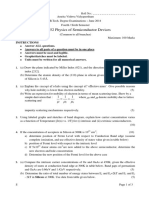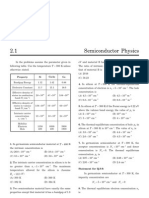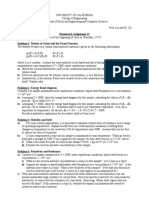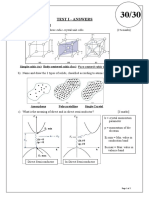0% found this document useful (0 votes)
11 views2 pagesSemiconductor Physics and Devices Assignment1
The document is an assignment on semiconductor physics covering various calculations related to intrinsic resistivities, Fermi levels, Hall effect parameters, doping concentrations, and carrier dynamics in Ge, Si, and GaAs at 300 K. It includes specific tasks such as determining resistances, conductivity types, majority carrier concentrations, and current densities under different conditions. Additionally, it provides physical constants and material properties relevant to the calculations.
Uploaded by
deepanramaraju123Copyright
© © All Rights Reserved
We take content rights seriously. If you suspect this is your content, claim it here.
Available Formats
Download as PDF, TXT or read online on Scribd
0% found this document useful (0 votes)
11 views2 pagesSemiconductor Physics and Devices Assignment1
The document is an assignment on semiconductor physics covering various calculations related to intrinsic resistivities, Fermi levels, Hall effect parameters, doping concentrations, and carrier dynamics in Ge, Si, and GaAs at 300 K. It includes specific tasks such as determining resistances, conductivity types, majority carrier concentrations, and current densities under different conditions. Additionally, it provides physical constants and material properties relevant to the calculations.
Uploaded by
deepanramaraju123Copyright
© © All Rights Reserved
We take content rights seriously. If you suspect this is your content, claim it here.
Available Formats
Download as PDF, TXT or read online on Scribd
/ 2













































































